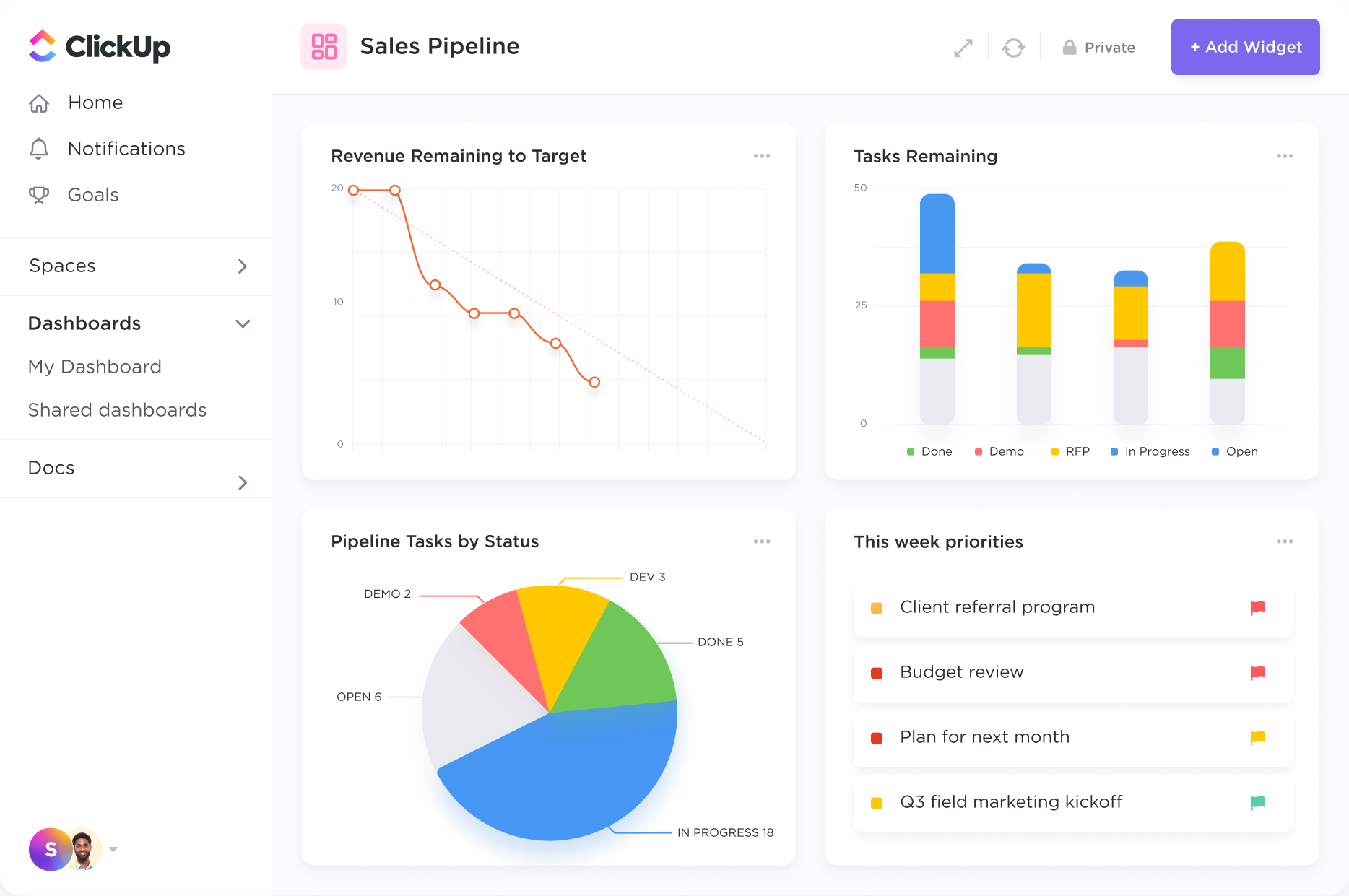Build the perfect customer database.
Create your ideal system to store and analyze contacts, customers, and deals. Add links between tasks, documents, and more to easily track all your related work.

Optimize your order management process with ClickUp's cutting-edge CRM system. Streamline customer interactions, track sales leads, and enhance customer satisfaction all in one place. Take your business to the next level with ClickUp's customizable solutions for efficient order management.
Free forever.
No credit card.
Trusted by the world’s leading businesses
Create your ideal system to store and analyze contacts, customers, and deals. Add links between tasks, documents, and more to easily track all your related work.

Create high-level views to monitor customer lifetime value, average deal sizes, and more. ClickUp's 50+ Dashboard widgets make it easy to visualize all of your customer data in one place.

CRM software enables effective management and tracking of customer orders by centralizing order information, providing real-time updates on order status, automating order processing workflows, and facilitating communication with customers regarding their orders.
CRM software offers features for order tracking, invoicing, inventory management, and automated notifications, streamlining the order management process. These features can help businesses improve efficiency, reduce errors, enhance customer satisfaction, and drive revenue growth.
Yes, CRM software can integrate with other systems like inventory management or accounting software to streamline the order management process by ensuring accurate and real-time data sharing, automated processes, and improved efficiency in tracking orders from creation to fulfillment.